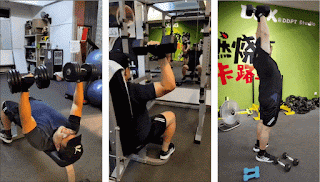Exercise: Why your squat weights might be lower than your deadlift weights - and how to fix it!
Visit 》Best Selling Gears for Squats and Deadlifts!
Hi Blacky,
On your question, “My working set for deadlifts was 3x3 150kg, yet my 1RM was 20kg more. Do you think this will be the same for me with squats?”, I suspect the weights for your squats might be generally LOWER than your deadlifts.
Here's a witty analogy to help you understand why:
Imagine you're trying to balance a broomstick on your finger. It's pretty easy, right? But now imagine you're trying to balance that same broomstick on your head. Much harder, isn't it?
That's because the higher the center of gravity, the more unstable the object becomes. The same principle applies to lifting weights. With deadlifts, the weight is close to the ground, giving you a lower center of gravity and making it easier to balance. But with squats, the weight is on your shoulders, giving you a higher center of gravity and making it more challenging to maintain balance.
Here's a humorous analogy:
Think of deadlifts as a sumo wrestler and squats as a ballerina. Sumo wrestlers are known for their low center of gravity and stability, while ballerinas are known for their grace and balance.
Deadlifts are like sumo wrestlers because they allow you to lift heavy weights with a relatively low risk of injury. Squats are like ballerinas because they require more balance and coordination.
In short, it's normal for your squat weights to be lower than your deadlift weights, especially if you're new to strength training. As you get stronger and more experienced, your squat weights will gradually increase.
Here are some tips for improving your squat strength:
- Focus on your form. Squats are a complex exercise, and it's important to use proper form to avoid injury. Make sure your core is engaged, your back is straight, and your knees track over your toes.
- Warm up properly before squatting. This will help to prepare your body for the exercise and reduce your risk of injury.
- Start light and gradually increase the weight. Don't try to squat too heavy too soon.
- Be patient and consistent. It takes time and effort to build squat strength.
Lastly, check out the 💥 EXPLOSIVELY EFFECTIVE EXERCISE TRAINING TECHNIQUE: CLICK HERE! 💥
Faithfully yours, Gary.

Comments
Post a Comment